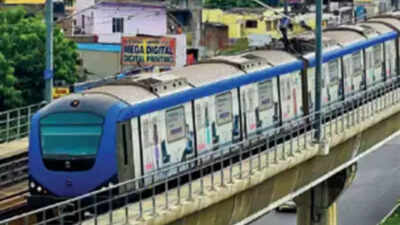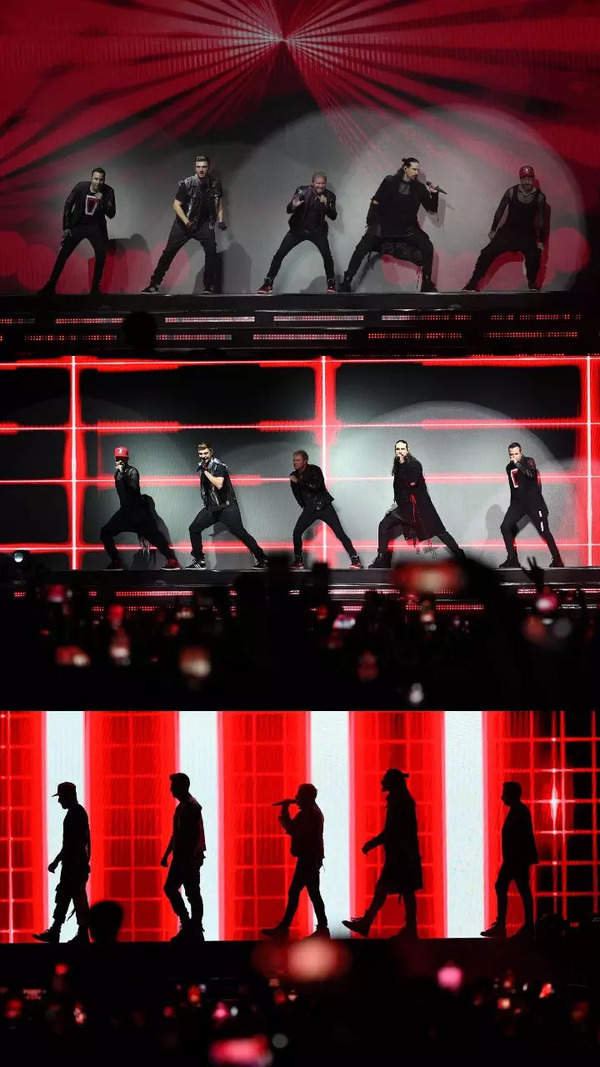- News
- City News
- chennai News
- Eight years on, Chennai metro yet to get some things right
Trending
Eight years on, Chennai metro yet to get some things right

It has been eight years since metro rail commenced services in the city, but a few crucial issues that mar rider comfort and discourage commuters from using the trains are yet to be resolved. The trains have started to become crowded during peak hours, but daily ridership is just 2. 5 lakh a day against the 7.75 lakh a day it was projected to grow to by this time. U Tejonmayam looks at four issues that need to be addressed to ensure more people use the services.
Ease parking woes of motorists
Regular commuters face hassles in parking at busy stations such as airport, Meenambakkam and Thirumangalam. Many also find it difficult to purchase a monthly pass in stations like airport and hence are not allowed to park during morning peak hours. CMRL planned to lease a plot opposite the airport and build a multilevel parking lot at Meenambakkam and Thirumangalam. While the leasing plan didn’t materialise, constructing a multilevel parking lot will mean closing existing parking space.
Girirajan said tariff for nonregular or non-commuters was recently raised to discourage them from parking vehicles at metro stations. “This will free up our parking space,” he said. CMRL has space for 12,000 bikes and 2,100 cars across its stations, with the biggest at Central and Alandur. CMBT station doesn’t have a parking lot. Parking space could not be provided at all stations as many were built on small spaces acquired mostly from the government.
Metro rail stations are located in key areas, but there is no incentive for commuters to reach them. The reason: Not all stations have options for last-mile connectivity. Experts say passengers must be given different options for first and last mile connectivity at all stations. Since metro rail operations began in 2015, CMRL has launched several last mile connectivity services but many failed. There are some feeder services from major stations, but people at smaller stations like
App-based cab service, e-bikes and e-autos were discontinued during the pandemic. They haven’t resumed. CMRL has now tied up with MTC to operate 22 small buses carrying 3 lakh passengers a month and has arranged vehicles with 12-40 seats for corporates, 40 electric autos in four stations and bicycles. “We plan to launch 500 autos in a year,” said Girirajan.
Absent, defunct signage adds to confusion
In Dubai, maypoles installed every 500 metres guide pedestrians to the nearest metro rail station. This is the practice followed by transit systems world over. In Chennai, a commuter has to ask around to find a metro rail station. There are large gantries or signboards along Anna Salai to guide motorists to the airport or other major hubs, but none showing the way to a metro rail station.
A few years ago, CMRL installed a few signboards between Vadapalani and Arumbbakkam stations on 100-Feet Road (Jawaharlal Nehru Salai) and one near AG-DMS station on Anna Salai on a trial basis, but the boards didn’t say how far the stations were. There are no boards for other stations. Many underground stations, often near a bus stop, have digital boards displaying train timings but are switched off. CMRL spokesperson L Girirajan said locations are being studied to place signages. “They will be installed soon.”
Make corridors sweat-proof
The absence of air conditioning at stations, especially in the concourse area and near ticket counters, is inconveniencing commuters particularly when it is hot and humid. At stations such as High Court, Central, Nandanam and LIC, commuters complain it is suffocating in the concourse level. People also suffer because access to the counters or concourse area is via long-winding underground walkways, like at LIC or High Court stations. These are not air-conditioned. The concourse level is where commuters spend some time to purchase tickets, get frisked and their bags scanned. With queues at ticket counters getting long during peak hours, commuters say they get drenched in sweat by the time they reach the platforms of underground stations. If there are five air vents, only two or three are used. Wall-mounted fans are installed on platforms. Girirajan said full ventilation had been started and that the temperatures are under control.
Ease parking woes of motorists
Regular commuters face hassles in parking at busy stations such as airport, Meenambakkam and Thirumangalam. Many also find it difficult to purchase a monthly pass in stations like airport and hence are not allowed to park during morning peak hours. CMRL planned to lease a plot opposite the airport and build a multilevel parking lot at Meenambakkam and Thirumangalam. While the leasing plan didn’t materialise, constructing a multilevel parking lot will mean closing existing parking space.
Girirajan said tariff for nonregular or non-commuters was recently raised to discourage them from parking vehicles at metro stations. “This will free up our parking space,” he said. CMRL has space for 12,000 bikes and 2,100 cars across its stations, with the biggest at Central and Alandur. CMBT station doesn’t have a parking lot. Parking space could not be provided at all stations as many were built on small spaces acquired mostly from the government.
Connectivity issues affect patronage
Metro rail stations are located in key areas, but there is no incentive for commuters to reach them. The reason: Not all stations have options for last-mile connectivity. Experts say passengers must be given different options for first and last mile connectivity at all stations. Since metro rail operations began in 2015, CMRL has launched several last mile connectivity services but many failed. There are some feeder services from major stations, but people at smaller stations like
LIC or Thousand Lights are forced to spend more money to reach them.
App-based cab service, e-bikes and e-autos were discontinued during the pandemic. They haven’t resumed. CMRL has now tied up with MTC to operate 22 small buses carrying 3 lakh passengers a month and has arranged vehicles with 12-40 seats for corporates, 40 electric autos in four stations and bicycles. “We plan to launch 500 autos in a year,” said Girirajan.
Absent, defunct signage adds to confusion
In Dubai, maypoles installed every 500 metres guide pedestrians to the nearest metro rail station. This is the practice followed by transit systems world over. In Chennai, a commuter has to ask around to find a metro rail station. There are large gantries or signboards along Anna Salai to guide motorists to the airport or other major hubs, but none showing the way to a metro rail station.
A few years ago, CMRL installed a few signboards between Vadapalani and Arumbbakkam stations on 100-Feet Road (Jawaharlal Nehru Salai) and one near AG-DMS station on Anna Salai on a trial basis, but the boards didn’t say how far the stations were. There are no boards for other stations. Many underground stations, often near a bus stop, have digital boards displaying train timings but are switched off. CMRL spokesperson L Girirajan said locations are being studied to place signages. “They will be installed soon.”
Make corridors sweat-proof
The absence of air conditioning at stations, especially in the concourse area and near ticket counters, is inconveniencing commuters particularly when it is hot and humid. At stations such as High Court, Central, Nandanam and LIC, commuters complain it is suffocating in the concourse level. People also suffer because access to the counters or concourse area is via long-winding underground walkways, like at LIC or High Court stations. These are not air-conditioned. The concourse level is where commuters spend some time to purchase tickets, get frisked and their bags scanned. With queues at ticket counters getting long during peak hours, commuters say they get drenched in sweat by the time they reach the platforms of underground stations. If there are five air vents, only two or three are used. Wall-mounted fans are installed on platforms. Girirajan said full ventilation had been started and that the temperatures are under control.
Start a Conversation
FOLLOW US ON SOCIAL MEDIA
FacebookTwitterInstagramKOO APPYOUTUBE










